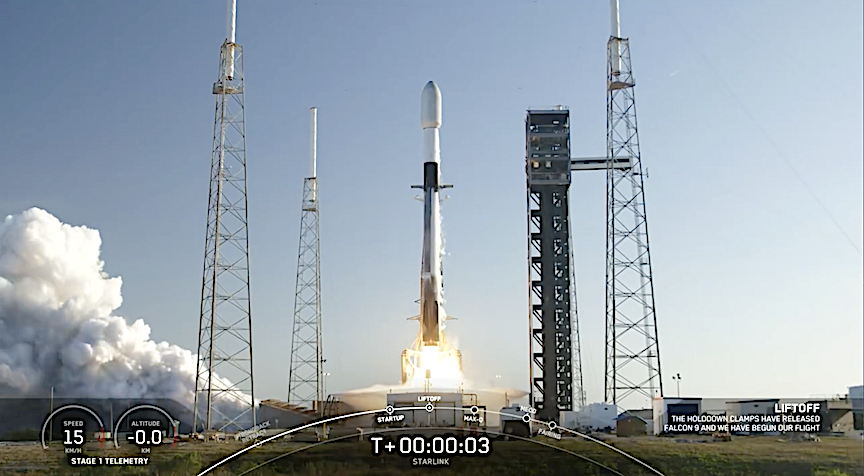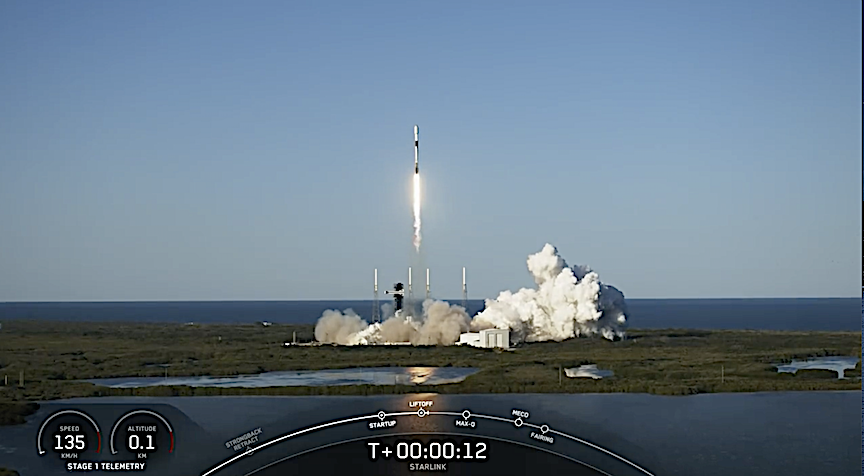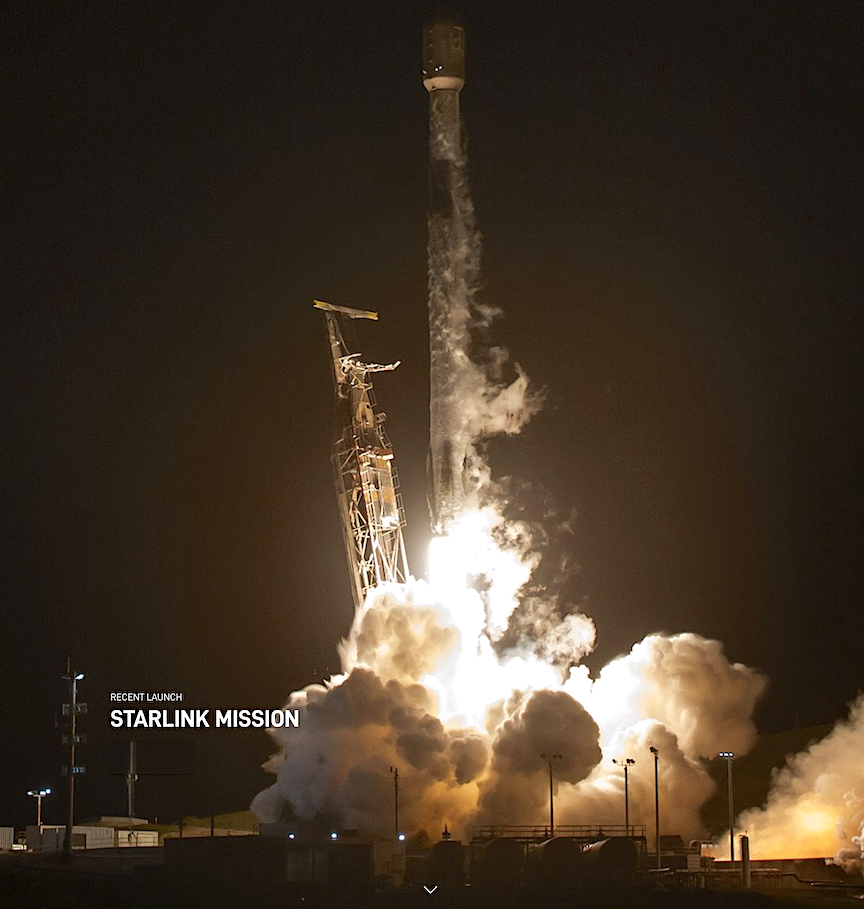
On Sunday, February 25 at 5:06 p.m. ET, Falcon 9 launched 24 Starlink satellites to low-Earth orbit from Space Launch Complex 40 (SLC-40) at Cape Canaveral Space Force Station in Florida. This is be the largest number of the v2 Mini satellites carried by Falcon 9 thus far, and is the 12th launch from the Space Coast in 2024.

This was the 13th flight for the first stage booster supporting this mission, which previously launched CRS-24, Eutelsat HOTBIRD 13F, OneWeb 1, SES-18 and SES-19, and now nine Starlink missions. Eight of its 12 flights to date have been Starlink missions.

The Falcon 9’s first stage came back to Earth about 8.5 minutes after liftoff. It made a vertical landing on the SpaceX droneship A Shortfall of Gravitas, which was stationed in the Atlantic Ocean.
UPDATE 1: Scrubbed Saturday’s SpaceX launch of largest number of the v2 Mini satellites

SpaceX is targeting Sunday, February 25 for a Falcon 9 launch of 24 Starlink satellites to low-Earth orbit from Space Launch Complex 40 (SLC-40) at Cape Canaveral Space Force Station in Florida. Liftoff is targeted for 4:34 p.m. ET, with backup opportunities available until 8:34 p.m. ET.
A live webcast of this mission will begin on X @SpaceX about five minutes prior to liftoff. Watch live.
This is the 13th flight for the first stage booster supporting this mission, which previously launched CRS-24, Eutelsat HOTBIRD 13F, OneWeb 1, SES-18 and SES-19, and eight Starlink missions. Following stage separation, the first stage will land on the A Shortfall of Gravitas droneship, which will be stationed in the Atlantic Ocean.
SpaceX’s Falcon 9 to launch largest number of the v2 Mini satellites on Saturday

A SpaceX Falcon 9 rocket will launch a batch of 24 Starlink v2 Mini satellites Group 6-39 on February 24 at 4:59 PM EST (21:59 UTC). Group 6-39 will launch from SLC-40 out of the Cape Canaveral Space Force Station in Florida that are headed to LEO on a southeastern trajectory to an initial orbit of approximately 275 by 285 kilometers, inclined by 43 degrees.
This will be the largest number of the v2 Mini satellites carried by Falcon 9 thus far. This would be the 12th launch from the Space Coast in 2024.
The trajectory is Southeast. A local sonic boom is not expected, but there will be a booster landing with a drone ship out on the Atlantic Ocean. The launch price is $67 million.
The booster expected to launch this mission is unknown at this time, but it will land on the droneship A Shortfall of Gravitas around 630 kilometers downrange in the Atlantic Ocean. Following this launch, SpaceX will be on pace to reach 120 total launches within 2024, falling short of the planned 148 launches. They will need to launch nearly three times a week every week from now on to reach this goal.
